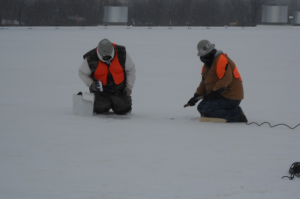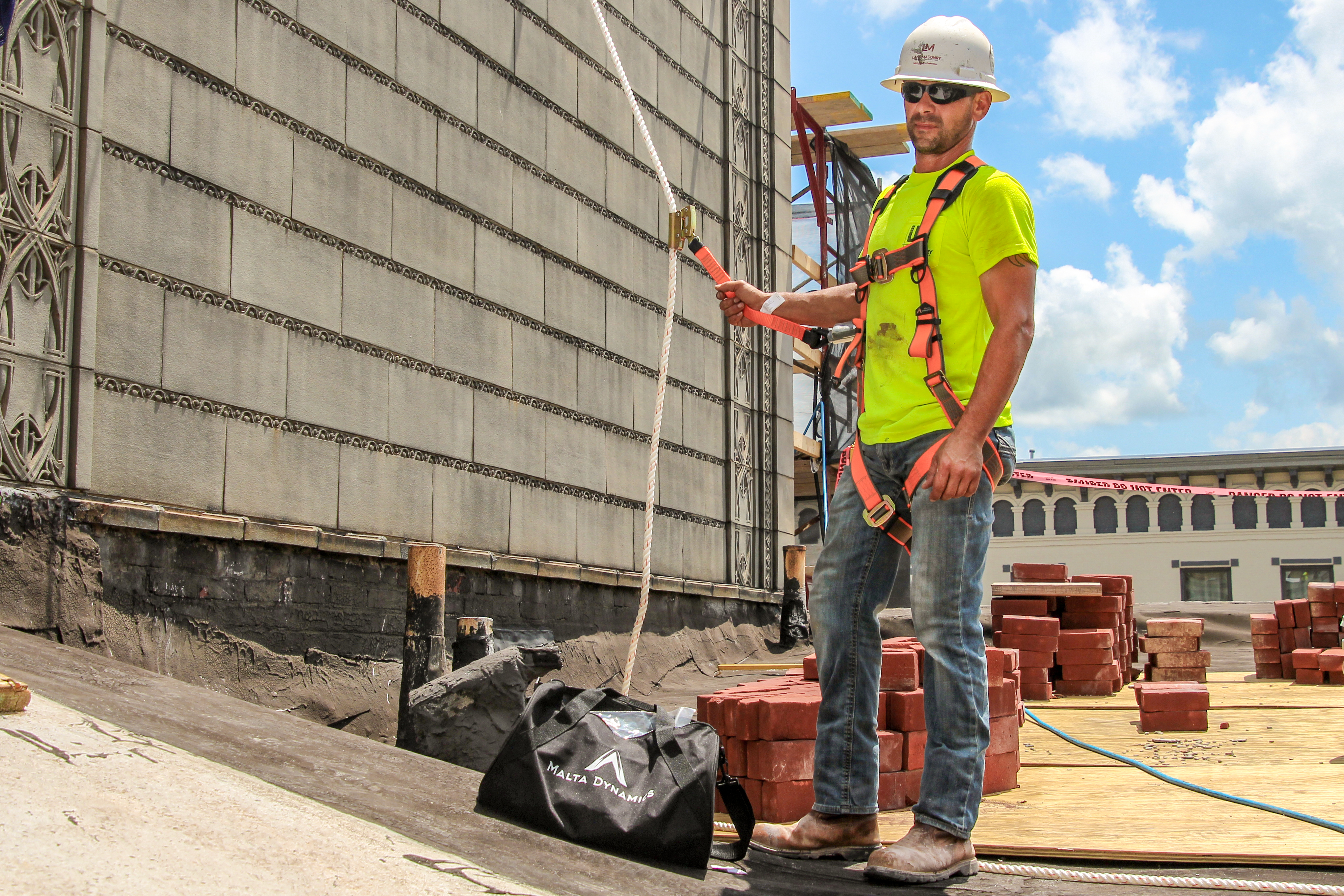Cold-weather Safety
Roofing is dangerous. Roofing in cold, wet and snowy weather makes a dangerous situation even worse. The following are a few common safety issues to consider when roofing in cold weather:

Windburn and frostbite can set in very quickly if roofing workers are not adequately dressed for cold weather. These workers are properly dressed.
Frostbite and Windburn: As the temperature drops, protecting your face and extremities becomes important. Windburn and frostbite can set in very quickly if you are not adequately dressed for cold weather. Wearing safety glasses and covering exposed skin is recommended. (For information about how to identify and treat hypothermia, see “Safety”.)
Ventilation: It is not uncommon for roofers to use hot boxes, trailers or tents to keep materials at the proper temperature for installation. If these structures incorporate propane heaters but are not properly vented, they can become a significant safety risk because of the potential buildup of carbon monoxide. Verify on a daily basis that exhaust is properly vented to reduce the risk of carbon-monoxide buildup.
PHOTOS: Benchmark Inc.




I didn’t know that some of the materials used in residential roofing could be temperature dependent. However, it makes sense that adhesive effectiveness can be determined by the ambient temperature. I’m sure that curing times can also be longer if the weather is colder. I’ll have to keep that in mind if I ever need roofing done. Thanks for the information.